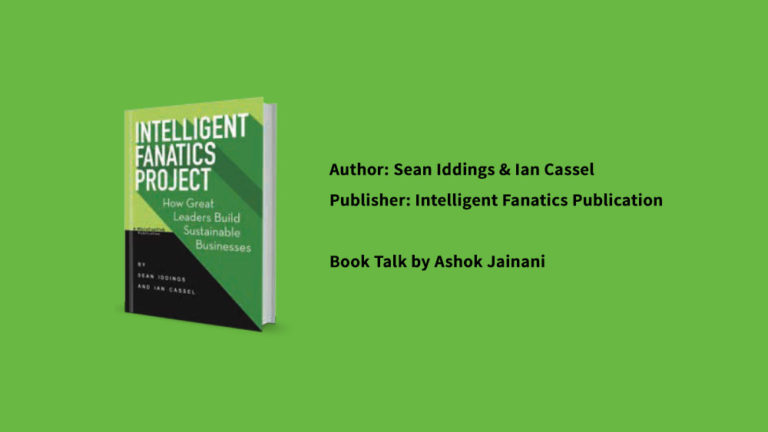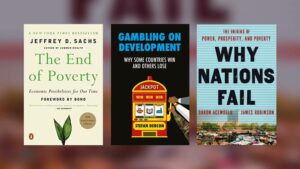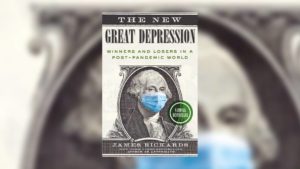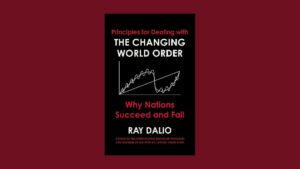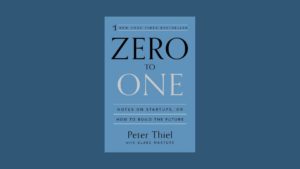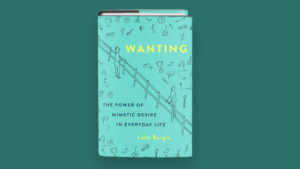Author: Sean Iddings & Ian Cassel / Publisher: Intelligent Fanatics Publication / Book talk by By Ashok Jainani
Charlie Munger defined “Intelligent Fanatic” as a Founder with unconventional ideas and a fanatical drive to build a high-performance organization. A learning machine that can quickly adapt to change. Able to create a trust-based culture that aligns everyone to think like owners. Focused on acquiring, training, and motivating the best talent. Their time horizon is in ten-year increments, not quarterly, and they invest in their businesses accordingly. Regardless of the industry, they are able to create an impenetrable moat that competitors initially cannot understand and eventually fear.
There are three essential ingredients – Integrity, Energy, and Intelligence – of building a sustainable business that lasts for centuries. The authors have expanded upon these ingredients to rewrite the formula: Intelligent fanatic = (Long-term vision + Intelligence + Energy + Perseverance + Execution) x Integrity.
We have heard of intelligent fanatics like Sam Walton, Jeff Bezos, Bill Gates, and others, but there are hundreds of others with incredible stories of failure, triumph, and perseverance. An intelligent fanatic is what a farsighted entrepreneur aspires to be and what every long-term investor dreams of finding and investing in early. Sean Iddings and Ian Cassel examine the common traits of these intelligent fanatics.
The book aims to uncover the strategies each intelligent fanatic used to build dominant and enduring businesses. Although these businesses, industries, geographic locations, and eras might be different, the strategies deployed by intelligent fanatics are quite similar, and authors feel adopting those learnings could provide a blueprint for building dominant, sustainable businesses.
These leaders build high-performance organizations that can dominate for decades. Intelligent Fanatics Project looks at the stories of eight intelligent fanatics who built dominant and enduring businesses. They operated in different industries, different eras, on different continents, and against different economic backdrops, yet their leadership styles, strategies, corporate cultures, and values were similar.
From the Book
“The business that is satisfied with itself – which looks upon itself as having accomplished its purpose—is dead… because it is not going forward. To my mind, nothing can ever be good enough; I am always dissatisfied; I preach dissatisfaction… The throbbing heart of the business is the intense desire to do better… Every business which works for the betterment of humanity should be eagerly pressing forward and not waiting to be shoved forward.
Marks & Spencer was founded by Michael Marks born in poverty in Poland. He fled to England where he decided on selling only items at the penny price point, calling his stalls Penny Bazaars and coined the slogan, “Don’t ask the price, it’s a penny.”
Walmart founder Walton invented practically nothing. He copied everything anybody else ever did. Basically, Walton broke other small-town merchants in the early days as he might not have been able to tackle some titan head-on at the time. “But with his better system, he could destroy those small town merchants. And he went around doing it time after time after time. Then, as he got bigger, he started destroying the big boys.”
Going too far ahead of the market needs or bringing a product ahead of time has ruined the fate of many brilliant men. John Patterson of NCR wrote “We devote a great deal of attention to finding out, not only what the public wants and what it may need, but also just how ready it is to absorb new ideas… We have to educate our customers and to keep just so far ahead that education of the buyer will always be necessary. Thus the market will be peculiarly our own.”



